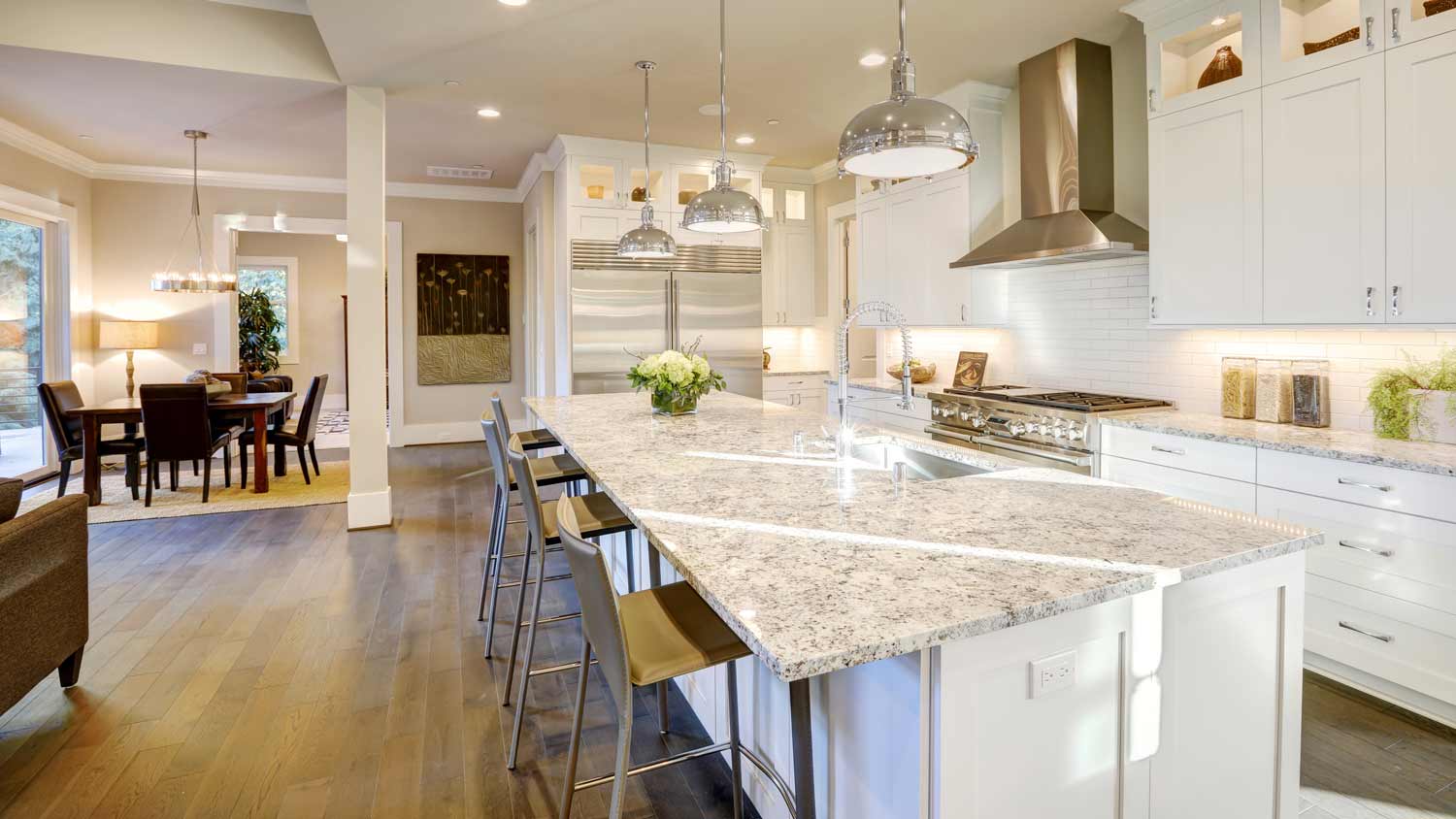
Discover how much under-cabinet lighting costs. Discover installation prices, key cost factors, and expert tips to save on your kitchen or workspace lighting project.
Get ready to up your illumination game


Installing a chandelier can completely transform a room into an illuminated masterpiece. Even though wiring multiple lights may sound like a complex task, you can complete it on your own using some basic tools, electrical knowledge, and the seven steps below. Get ready to brighten up your room and save a little money by installing your new chandelier yourself.
Prepare to install and wire your chandelier by gathering all of your tools and supplies. You’ll be working close to the ceiling, so it will be handy to have them nearby. As you’re working with electricity, it’s also important to wear safety equipment such as safety glasses and gloves. This will help protect you from electric shocks or falling debris.
Before starting the wiring process, turn off the power. It’s recommended to turn off all power using the master switch to avoid any risk of electric shock. However, if you’d prefer, you can turn off just the power to the switch that will power the chandelier.
Once you have all your tools ready and the power shut off, you can begin the installation process. Prepare your chandelier by wiping it down with a clean rag and checking all the connection points for damage. If you find any problems, you may need to exchange it for a new one to prevent any stability issues and safety hazards.
Next, figure out the amount of chain needed to hang your chandelier. If you’re hanging your chandelier over a table, it should hang between 30 to 36 inches above the surface.
Use a measuring tape to calculate this distance and mark the ceiling point where the chandelier will be installed.

Before touching any wires, ensure that the power supply to your lighting system is off. Turn the light switch on and off to test for power in the fixture and use an electricity tester to check that the wires do not have power flow.
Once you’ve confirmed that the power is off, take a look at the wires in the electrical box. Get familiar with the ground, hot, and neutral wires.
Each wire will have a different color:
Hot wires carry the electrical power and are black, red, blue, or yellow
White wires are neutral
Green wires are the ground connection

Make sure the electrical box is securely in the ceiling. If there are any loose screws, use a screwdriver to tighten them.
If wires in the electrical box are not properly exposed, use a wire stripper to remove half an inch of the insulation to expose the bare wire. If any wires are worn out, replace them by locating the connection junctions of the old wires, cutting them off, and attaching new ones.
You can now attach the chandelier’s mounting bracket to the ceiling. Depending on how your chandelier is designed, you can either install the mounting bracket to the electrical box or connect a metal strap to the electrical box and thread the mounting stem to it.

Now that your chandelier is attached to the ceiling, you can start connecting the wiring. Your chandelier should come with a pre-installed wiring system that connects to all of the bulbs. Match the hot, ground, and neutral wires of the chandelier to those in the electrical box.
Twist the connections together using wire caps. If the wires are getting tangled, you can use electrical tape to keep them separated.

Once all the wires are connected, you can insert them back into the electrical box. Put the electrical box cover back on, and then install the canopy using the screws provided.
Once it’s hung, you can add the light bulbs to the chandelier. Screw in each bulb using a clockwise motion.

Turn the power supply back on at the breaker and flip the switch for the chandelier. Make sure all of the bulbs are lighting up.
If there are any bulbs that do not light, double-check the wire connection and make sure the individual bulbs aren’t burnt out. You can also use an electricity tester to ensure that power is flowing to all arms of the chandelier.
If you’re looking to save some cash, wiring a chandelier with multiple lights can be done yourself with some common tools and electrical knowledge. However, working with electricity can pose some serious risks if you’re not careful.
If you feel at all hesitant about completing the project yourself, it’s best to contact a local light fixture technician near you. They’ll be able to complete the wiring and make sure everything is working properly. The average cost to have a chandelier installed ranges from $300 to $2,000, but it’s a worthwhile investment to keep your home and yourself safe.
From average costs to expert advice, get all the answers you need to get your job done.

Discover how much under-cabinet lighting costs. Discover installation prices, key cost factors, and expert tips to save on your kitchen or workspace lighting project.

Light fixtures are important elements in any home. Find out how much it costs to install a light fixture based on factors like type, location, and labor.

Discover the professional Christmas light installation cost, including average prices, cost factors, and tips to save on your holiday lighting project.

Learn how much a light costs a year, so you can learn how to calculate the annual price for light fixtures and decide on the right bulbs for your home.

Installing recessed lighting can be a difficult task, so it’s important to hire the right professional to do the job.

If your ceiling fan light flickers, something may be wrong with the equipment, circuit, or electrical system. Use this guide to find the cause and the solution.